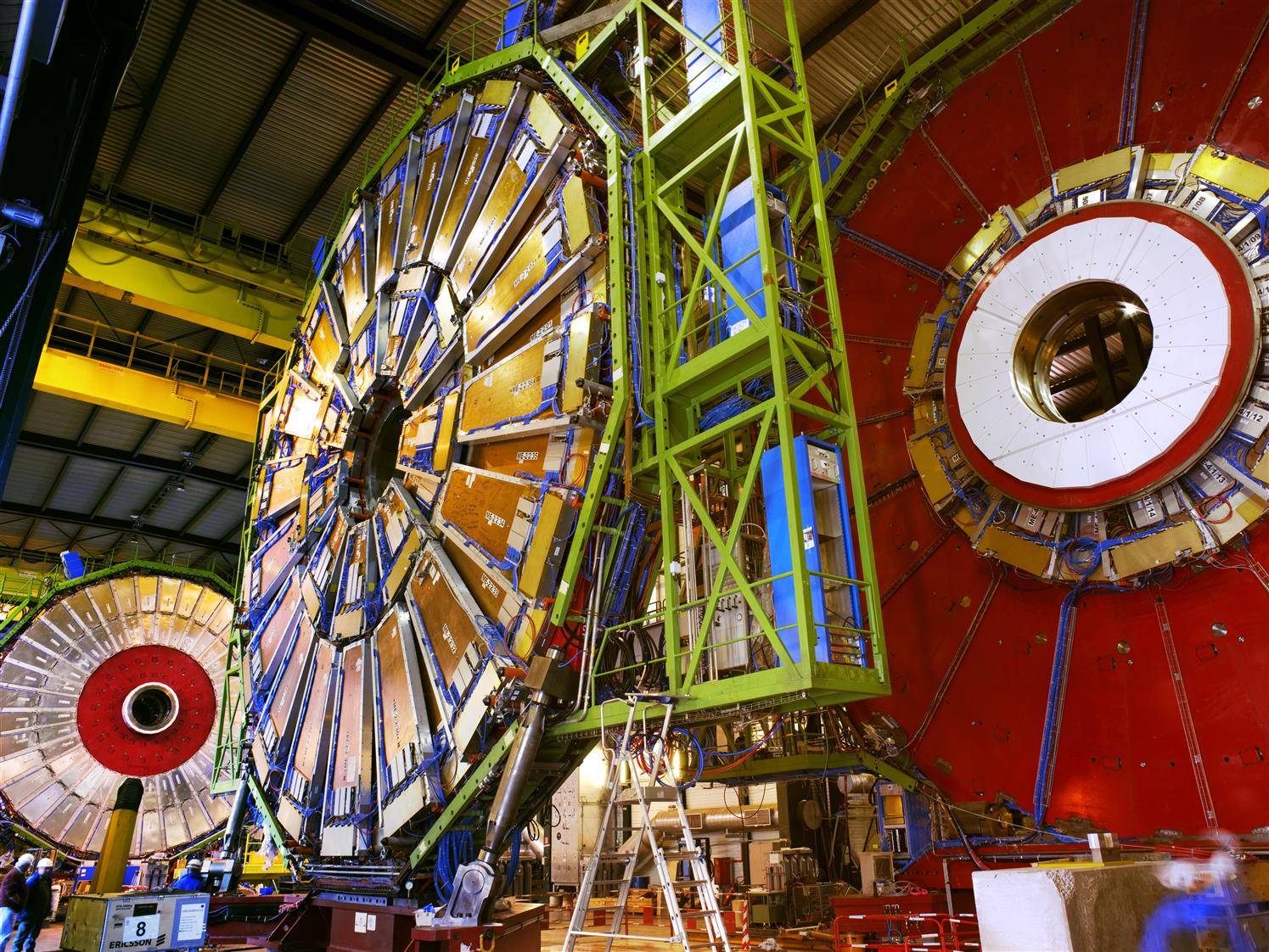The waltz of the endcaps
CMS endcaps put on their dancing shoes
The huge hangar of the CMS surface hall is an unlikely setting for a grand ball, except perhaps if those dancing endcap disks are 15 m in diameter. The three segments of CMS that are still on the surface (known as YE-1, YE-2 and YE-3) were last week rotating and sliding past each other so as to end up in the reverse order from how they started.
But the reason for this merry dance is far from frivolous. The endcaps are some of the last elements to be installed underground and the changing of order will save time by allowing work to continue in the pit while they are lowered. "We gain a logistic advantage this way," says Technical Coordinator Austin Ball: "Otherwise the nose of the endcap nearest the centre, YE-1, would poke into the central barrel, preventing us from installing the tracker until all three were in place. This way, however, the work can be done in parallel rather than in series; we can lower all three, starting with YE-3, without removing the scaffolding or stopping work."
This move was not envisaged in the original plans and is not entirely risk-free, but it could gain the team as much as three or four weeks on their schedule. The decision to move the disks came about when Austin realised how much time could be gained just by reversing the order: "I was staring at the drawings one night and I realised that it made much more sense to put them in the other way around. Hubert [Gerwig] thought I was just being a crazy physicist, but he likes a challenge so he agreed."
Hubert explains how the movement happens: "We first have to rotate each disk before moving them past each other like curtains along rails, and then turn them back into position for entry into the pit." The disks move on air pads that use pressurized air, trapped within a sealing ring, to hold up their weight as the pads slide along greased metal rails. The air supports the weight just like in a hovercraft: the pressure (about 30 times that of the atmosphere) enables each square centimetre to support 30 kg, such that each 1 m-diameter pad can take a weight of up to 250 tonnes. With their combined forces the air pads can easily support the endcap disks of 440, 880 or 1430 tonnes.
The friction factor of this system is just 1%, meaning that, effectively, the force needed to move them horizontally is the equivalent of moving only 1% of the component’s weight. This system has been used in moving all of the heavy pieces, both above ground and in the cavern. The result is a swift but steady and graceful movement of which any dancer would be proud, with an entire segment rotating 90 degrees in less than an hour.
The initial and fairly bold reasoning behind using the air pads was that, due to their efficiency in bearing the load of the components, they would add flexibility to moving pieces, and the last-minute waltz of the endcaps is an example of just this, enabling CMS to speed up the final stages of installation. "Nice to see the vision coming to fruition," says Austin. "They really do work!"


